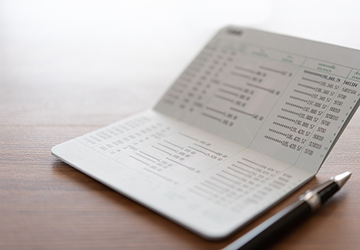Introduce
For example, mortgage-backed securities are a subset of asset-backed securities. In other words, it is a bond backed by property, such as a house. 1 The investor acts as a lender by purchasing a mortgage with monthly payments. Institutional, corporate, and individual investors are the norm for these securities. Investors who buy mortgage-backed securities (MBS) risk losing money if homeowners default.

Here's How Mortgage-Backed Securities Work
Modern mortgage-backed securities were made possible when President Lyndon Johnson signed the Housing and Urban Development Act into law in 1968, creating Ginnie Mae. Johnson proposed allowing banks to sell mortgages, freeing up funds for other home loans. Non-bank financial institutions can enter the mortgage market thanks to mortgage-backed securities. Before MBS became widespread, only banks could provide long-term loans. They are financially stable enough to stagnate before repaying their loans over 15 or 30 years.
Lenders can recover losses quickly thanks to MBS, initially designed to provide instant cash recovery to lenders in the secondary market and increased lender participation. In a mortgage, neither the borrower's income nor property is at stake. Because of this, there is now more competition for traditional banking institutions. So they lowered their standards to stay competitive.
Types of Mortgage-Backed Securities
There are many kinds of mortgage-backed securities, but they are all essentially the same: bonds. Below are the different types of mortgage-backed securities (MBS).
Certificate of Participation
Participation pass-through certificates are the simplest type of MBS. Mortgage holders receive their prorated share of the principal and interest payments.
Secured Debt Obligations
The structured securities market became highly aggressive in the early 2000s. To win new clients, investment banks developed increasingly complex investment products. Create a Collateralized Debt Obligation (CDO) as an example. They can include different loans. These products may or may not have mortgages and serve the same purpose for investors as an MBS. Around the time the CDO was formed, invest.

In addition, investment banks created a more complex type of mortgage-backed security known as a mortgage-backed obligation (CMOS). To make these complex investments, mortgage pools are divided into segments with similar levels of risk. Regarding credit risk and cash flow, the grade with the lowest risk has greater uncertainty, while the grade with the highest risk has greater uncertainty. Some investors are attracted to higher interest rates because of the increased risk.
Mortgage-Backed Securities: Pros and Cons
Buying mortgage-backed securities is a great way to spread your risk across a broader range of assets. As investments that pay regular dividends, they may interest those looking for a regular income stream. However, the amounts of these payouts vary, which could be better for investors looking for a steady income stream. The risks associated with secured mortgages also apply to MBS. Homeowners may return principal balances to investors sooner than expected due to refinancing. Market and liquidity risk are also important when purchasing MBS.
MBS and Financial Crisis
Mortgage-backed securities were instrumental in triggering the 2007 global financial crisis, which destroyed trillions of dollars of wealth, led to the collapse of Lehman Brothers, and sent shockwaves through financial markets around the world. The rapid rise in property prices and increased demand for MBS made it inevitable that banks would ease lending standards, leading consumers to enter the market at any cost.
Crisis
The origins of subprime mortgage-backed securities date back to this point in time. With Freddie Mac and Fannie Mae aggressively boosting the mortgage market, demand for mortgage-backed securities deteriorated, and the ratings became moot. In 2006, housing costs hit record highs. It is common for subprime borrowers to fail to repay their loans or "default." Because of this, the long-term decline in the housing market began. Foreclosures have increased as homeowners realize their homes are worth less than their mortgages.
The value of traditional mortgages that underpin the MBS market also fell sharply. Many MBS and CDOs based on mortgage pools are grossly overvalued due to waves of defaults. Losses mount as banks and other institutional investors try and fail to sell their troubled MBS (mortgage-backed securities) investments. Several banks and other financial institutions were on the brink of collapse due to the ensuing credit crunch. The entire economy has also nearly collapsed because of the loan freeze.
Diploma
Mortgage-backed securities are challenging investments that require extensive preparation. It can be helpful to check that the seller is reliable before buying. If you need help finding an MBS that can help you get the returns you want, it may be wise to consult a financial advisor. Plus, it would help if you had a lot of capital to buy MBS, making these bonds challenging for novice investors. The buying and selling of mortgage-backed securities continues to this day. Most people choose to keep their current mortgage, and the market for such products has recovered. The Fed continues to hold a sizeable share of the MBS market, although it is working to reduce it through incremental sales.









